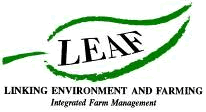
Use your loaf!
with John Plumb
We farm a 120 hectare arable farm in Warwickshire where we have recently built a relationship with Woodlands Special Needs school in nearby Coleshill. We have found that children of all abilities can really engage with a visit and activities based on bread because it is so familiar to them. We talk about their favourite sandwiches or pizzas as a way to explain about crops, how they grow, what farmers do to look after them and how we work with nature. We also try to engage every sense: touch, smell, sight, sound and even taste, which can be so hard to include in a visit. It’s so lovely to see farming putting a smile on their faces!
Starting with food
Apart from a field of healthy wheat, all you need is some wheat grain, a milling machine (or even a pestle and mortar) and a bag of flour. For the later activity, it’s time to get your hands dirty and make some bread. Once I’ve said hello and welcomed everyone to the farm, I start with a loaf of bread and ask if people know what bread is made from. If the group has brought lunch, then we start by exploring their lunch boxes – odds are that most of them will have sandwiches or rolls. I then explain that bread is made from wheat and that growing wheat is a long process (“a whole year!”), starting in October when the wheat is sown and ending the following July/August when it is harvested.
Including nature
As well as investigating what bread is made from, the wheat field is a fantastic environment to explore and look at nature through the seasons. We go on a bug hunt amongst the wheat stalks and talk about how some insects, such as aphids, are pests that can damage the wheat but how others help us grow food, for example, the hunting ladybirds that help to control pests. Depending on the children’s ability, we can move on from insects and worms to the larger animals that hunt, feed and live in the wheat field – the small mammals and birds. It can be difficult to explain how all these animals are connected but I try to make the link that they all make their home in my wheat field.
Hands on involvement
The group are shown some ripe wheat stalks, they then remove the grain, rub it in their hands and talk about how it feels and smells. A big bucket of grain is fantastic for sticking your hands into and having a good feel about! We show them the milling process and let them have a go, adding the grain, turning the handle and watching the grain turn into flour – white and powdery. If everyone is happy to get dirty fingers we can feel the powdery white flour and even taste a little, usually with cries of “Bleeurgh! That’s disgusting!” We finish with a taste of freshly baked bread, or by tucking into our sandwiches on the edge of the wheat field. The silence is a sensory experience in itself!
Adapting our visit
Because this visit starts with bread, a staple food, it is fantastic for connecting with all sorts of groups. Wherever possible, it’s best to get out into the field but even if this is not possible, this is still a very rich focus for a visit. There’s a wealth of opportunity for feeling the plants, the soil, the grains and the dough. Bread and baking are a great way of connecting people with farming and for older visitors, in particular, offers the opportunity to explore memories of food, farms and cooking. Food can also be a good way to connect with teenagers and young adults (who doesn’t love pizza?). Baking bread and eating it fresh from the oven – or cooked on a stick and fresh from the fire if you are feeling brave – is a magnificent taste experience.

